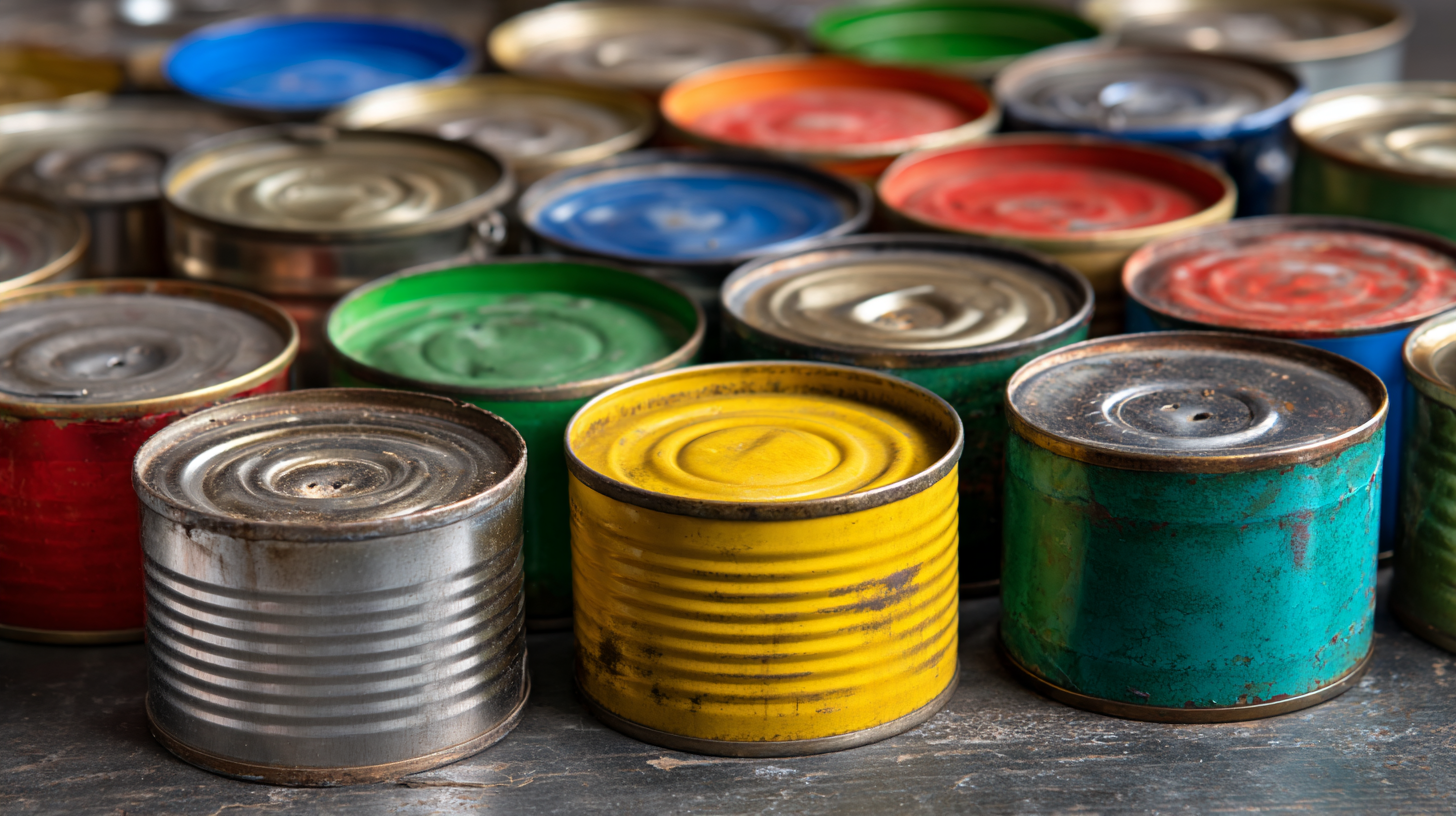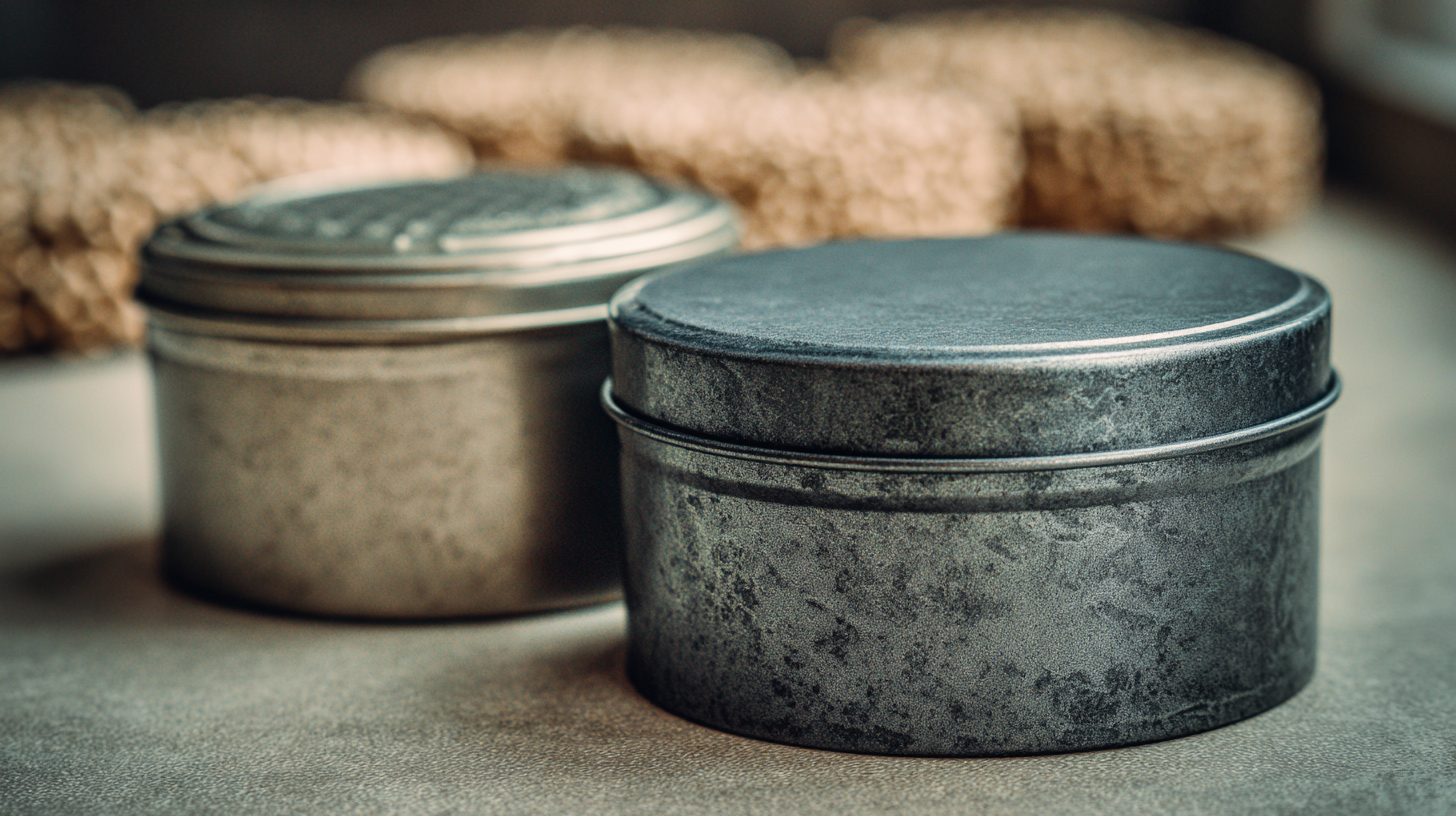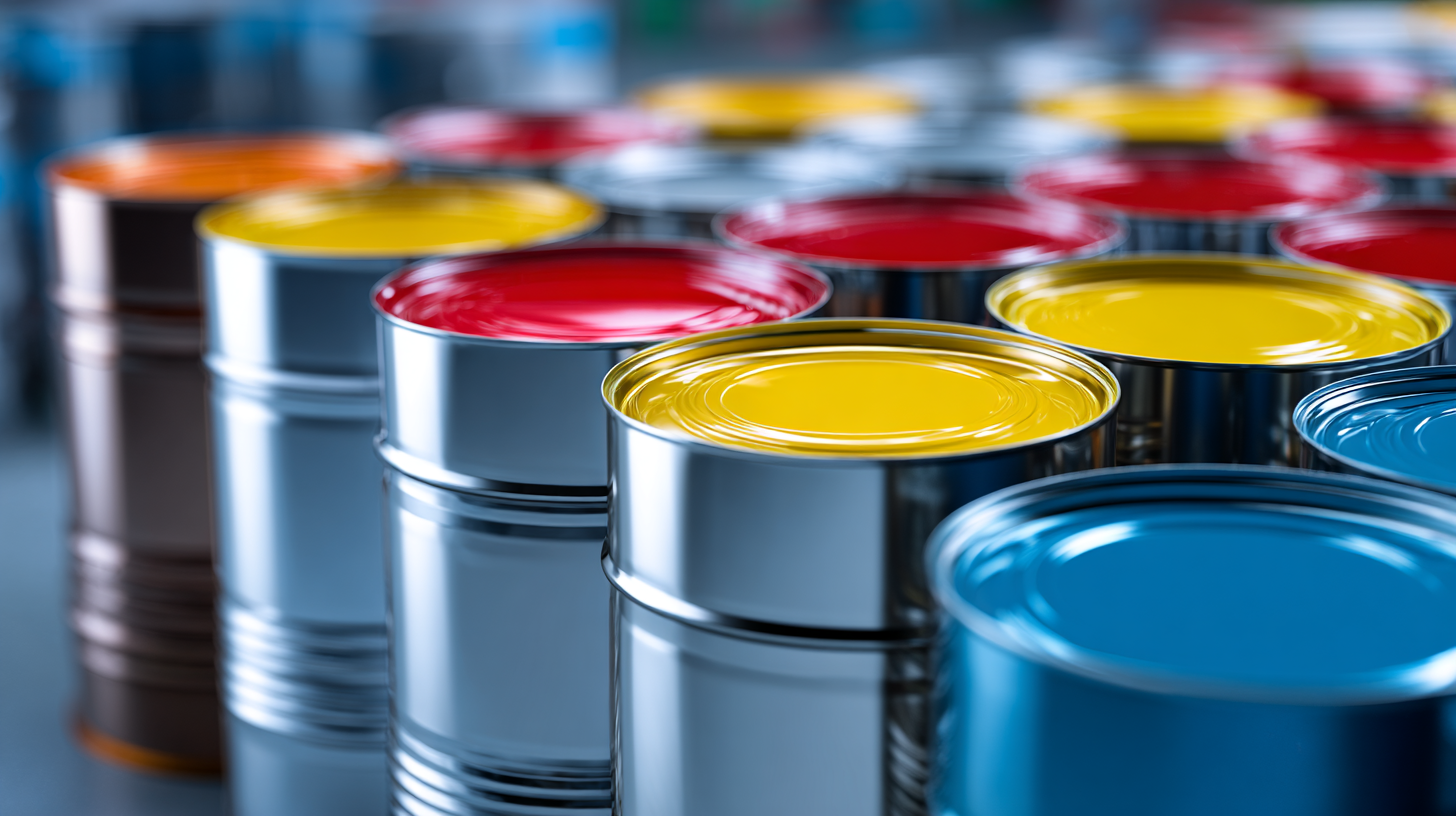 +8618680445103
+8618680445103
Free Standard Samples can be provided for you to check the quality.
Leave Your Message
In recent years, the demand for Metal Tins has surged across various industries, driven by their versatility, sustainability, and aesthetic appeal. As we look ahead to 2025, understanding the market dynamics surrounding Metal Tins becomes crucial for businesses aiming to capitalize on this promising segment. This blog delves into the latest insights regarding Metal Tins, examining key industry examples and presenting comprehensive data analysis that highlights emerging trends and consumer preferences.

From food packaging to cosmetics, the applications of Metal Tins are vast, making them an essential component in product development strategies. By exploring the factors influencing the Metal Tins market and proposing effective solutions, this article aims to equip stakeholders with the knowledge needed to navigate and thrive in the evolving landscape of this industry.
As we look towards 2025, the metal tin production industry is poised to witness significant shifts driven by emerging trends and innovations. Reports indicate a growing emphasis on sustainability, with manufacturers increasingly adopting eco-friendly practices. Utilizing biowastes as catalysts in production processes is becoming more common, as evidenced by recent studies highlighting their potential in reducing costs and environmental impacts. By integrating such sustainable methods, companies can not only enhance their operational efficiency but also contribute positively to global environmental sustainability goals.
Moreover, advancements in material innovations continue to shape the future of metal tins. Key industry insights reveal that targeted investments in digital technologies and data foundations are critical for manufacturers aiming to bridge the skills gap and foster innovation. For instance, the plastic alternative provided by metal tins aligns well with increasing consumer demand for sustainable packaging solutions. As per the latest trends, the packaging industry is projected to grow substantially, with the metal packaging segment alone expected to account for a significant portion due to its recyclability and durability. In 2025, these evolving dynamics will redefine how metal tins are produced and marketed, reflecting a broader commitment to sustainability and innovation across the manufacturing landscape.
In the ever-evolving world of packaging, aesthetics play a pivotal role in defining consumer preferences, particularly in the metal tin sector. Innovative designs not only draw attention on crowded shelves but also influence the perception of quality and value. For instance, brands are now employing vibrant colors, unique shapes, and intricate patterns to create a visual story around their products. This trend highlights how metal tins can transcend their functional limitations to become an integral part of the overall brand experience.
Moreover, the integration of sustainability into these designs is becoming increasingly significant. Consumers are more environmentally conscious than ever, prompting brands to develop aesthetically pleasing metal tins that are also recyclable and made from sustainable materials. This dual focus on design and environmental responsibility is not only attracting eco-minded buyers but also enhancing brand loyalty.
As we move towards 2025, companies that can blend innovative aesthetics with sustainable practices will likely lead the way in capturing market share and customer hearts alike.
As the market for metal tins continues to evolve, sustainability has emerged as a pivotal theme for 2025. The environmental impact of packaging materials is under scrutiny, urging manufacturers to innovate not only in design but also in sourcing and production methods. Key considerations include the recyclability of materials and the carbon footprint associated with their lifecycle. Metal tins, made from materials like aluminum and tinplate, are inherently more sustainable than many plastic alternatives due to their ability to be recycled multiple times without degradation.

Furthermore, brands are increasingly adopting eco-friendly practices, such as using recycled metals and minimizing waste during manufacturing processes. Companies are also exploring the use of water-based adhesives and biodegradable coatings to enhance the environmental friendliness of their products. By prioritizing sustainability in metal tins, businesses not only comply with regulatory standards but also respond to rising consumer demand for eco-conscious packaging solutions. As we move deeper into 2025, the intersection of sustainability and metal packaging will likely shape industry trends and consumer preferences significantly.
In recent years, metal tins have emerged as a versatile packaging solution across various industries, showcasing their adaptability and appeal. One notable example can be found in the food sector, where artisanal brands have embraced decorative metal tins for packaging gourmet teas and specialty coffee. These containers not only enhance product preservation but also serve as attractive collectibles, tapping into the growing consumer trend towards sustainable and reusable packaging. The aesthetic appeal of metal tins helps these products stand out on crowded shelves, contributing to increased sales and brand loyalty.
The beauty and practicality of metal tins are also evident in the cosmetics and personal care industry. Brands like Lush and Burt's Bees utilize metal tins for their balms and salves, promoting a chic and eco-friendly image. The use of metal not only protects the integrity of the product but also reinforces the brand's commitment to sustainability. Moreover, the ability to customize tins with unique designs and finishes allows companies to create a lasting impression on consumers, ultimately driving repeat purchases and positive brand associations. These case studies highlight the growing significance of metal tins as a strategic choice for packaging, further expanding their footprint in global markets.
| Sector | Application | Tin Size (ml) | Market Growth (%) | Sustainability Rating |
|---|---|---|---|---|
| Food & Beverage | Coffee Packaging | 250 | 5.8 | A |
| Personal Care | Body Cream | 100 | 7.2 | B+ |
| Pharmaceutical | Ointment | 50 | 6.5 | A+ |
| Household | Candles | 300 | 8.0 | B |
| Tobacco | Cigar Storage | 750 | 4.2 | C+ |
The market for metal tins is evolving, driven by changing consumer preferences and a greater emphasis on sustainability. As consumers become more environmentally conscious, the demand for recyclable and reusable packaging solutions has surged. Metal tins, known for their durability and recyclability, are increasingly favored by brands aiming to enhance their eco-friendly profiles. Analyzing recent market trends reveals a significant shift towards minimalist and aesthetic designs that resonate with modern consumers, making metal tins not just functional but also a desirable packaging choice.

Furthermore, data analysis indicates that certain industries are leading the charge in metal tin adoption. Cosmetics, gourmet food, and specialty beverages are examples where metal tins are thriving as a packaging option. Brands are leveraging unique designs and custom sizes to cater to niche markets, thereby enhancing consumer engagement. With a growing appreciation for artisanal products and high-quality packaging, metal tins are expected to maintain their competitive edge in the marketplace. This trend is evident as companies tap into data-driven strategies to align their offerings with consumer desires, creating a dynamic and responsive metal tin market.
